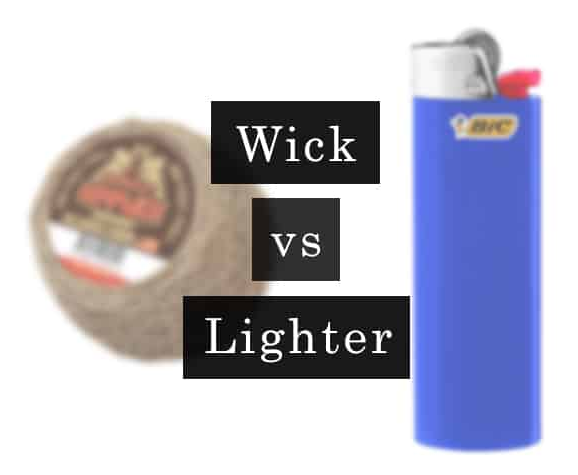
Wick Vs Butane Lighter: Best Way To Fire Up
Share
Two Popular Ignition Methods for Your Bong: Wick vs. Butane Lighter
When it comes to igniting your bong, two common methods prevail: using a wick or a butane lighter. Each method has its unique characteristics and considerations. Let's delve into the differences between the two to determine which might suit your preferences better.
What is a Wick?
A wick is crafted from fibers derived from an industrial plant and coated with beeswax to regulate its burn rate. Despite its natural origins, burning a wick releases various combustion byproducts, including carbon monoxide and nitrogen-containing compounds. While there's no concrete scientific evidence on the health effects of burning wick, concerns about exposure remain.
Conveniently, wick can be wound into measured lengths for easy use.
What is Butane?
Butane, an odorless gas extracted from crude oil, is found in nearly all lighters. Under low-pressure conditions, butane remains in a liquid state. When the lighter's button is depressed, it transforms into a combustible gas. Upon ignition, butane burns to produce carbon dioxide and water. Although concerns exist about exposure to large quantities of butane, there's limited evidence on the effects of small yet repeated exposure.
Convenience Factor:
To light a wick, you'll need an additional tool like a lighter or match. It requires some time to ignite, as the material itself isn't inherently flammable. Extinguishing it may require a few puffs and shakes.
In contrast, a butane lighter ignites with a flick or two of the wheel, offering immediate flame for your bowl. Extinguishing it is as simple as releasing the trigger. However, maintaining embers in a deep bowl with a butane lighter can be challenging.
Burning Temperature:
Wick burns at lower temperatures, typically between 300°F and 500°F, allowing for a more flavorful and less harsh smoking experience. Butane lighters, on the other hand, can reach temperatures as high as 2,000°F to 4,000°F.
Cornering:
Cornering, the practice of burning herbs at the edges of the bowl for fresh hits, is easier with a wick due to its precise control over the flame's direction. Butane lighters, with their wider flame, make cornering more challenging.
Choosing Between Wick and Butane Lighter:
If you prioritize control over burning rate and desire a leisurely, flavorful session, the wick is an ideal choice. Its lower temperature and lack of chemicals offer a cleaner experience.
Butane lighters excel in quick, efficient, and convenient smoking. Their broader flame simplifies sessions, particularly for less coordinated smokers.
While some argue that using a wick is safer and healthier, definitive evidence is lacking. Therefore, making an informed decision when comparing wick and butane lighters remains a personal choice.
